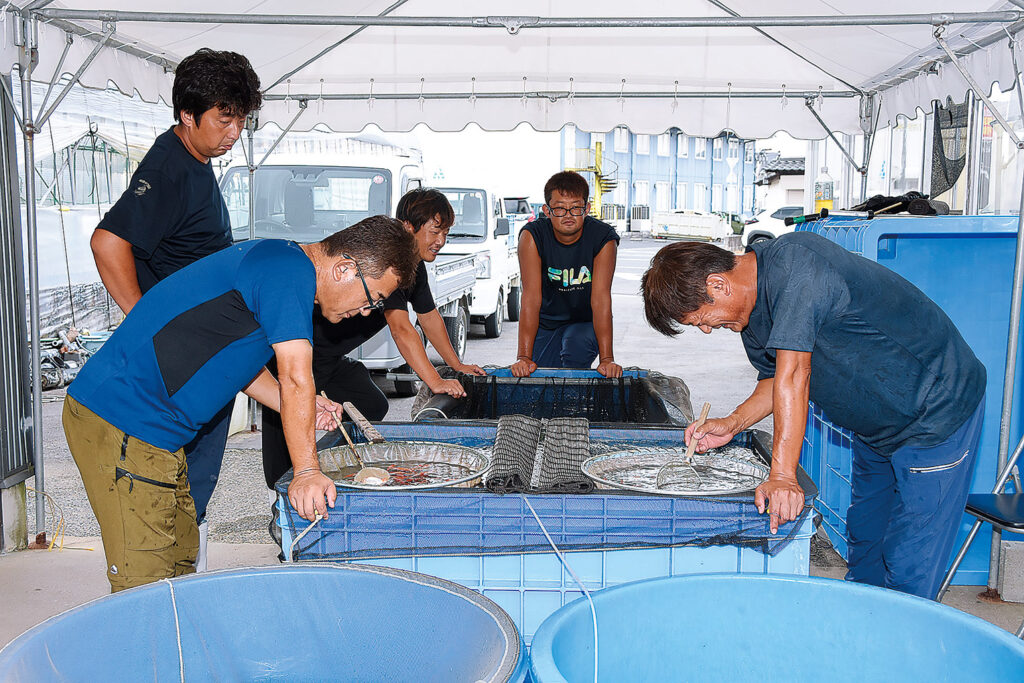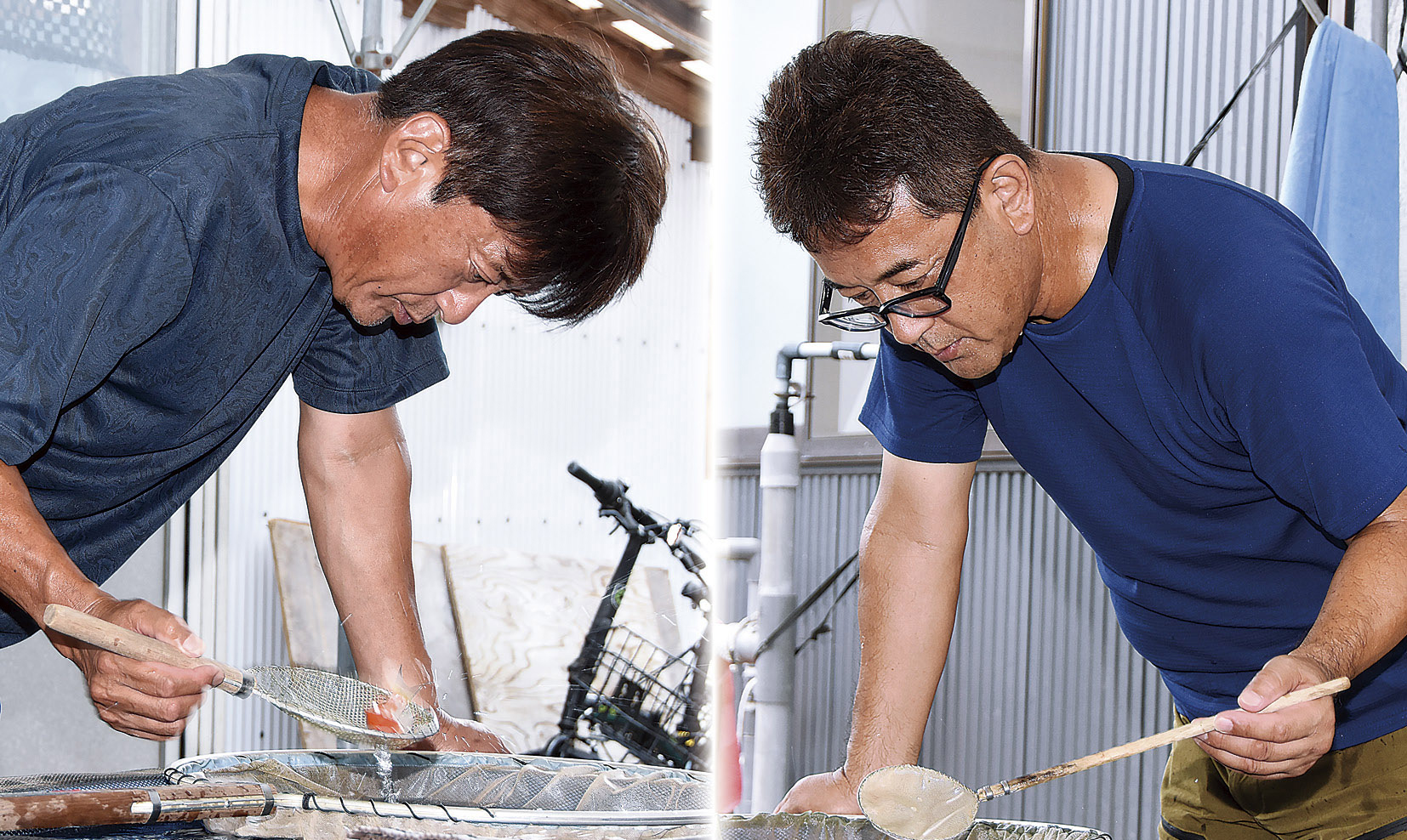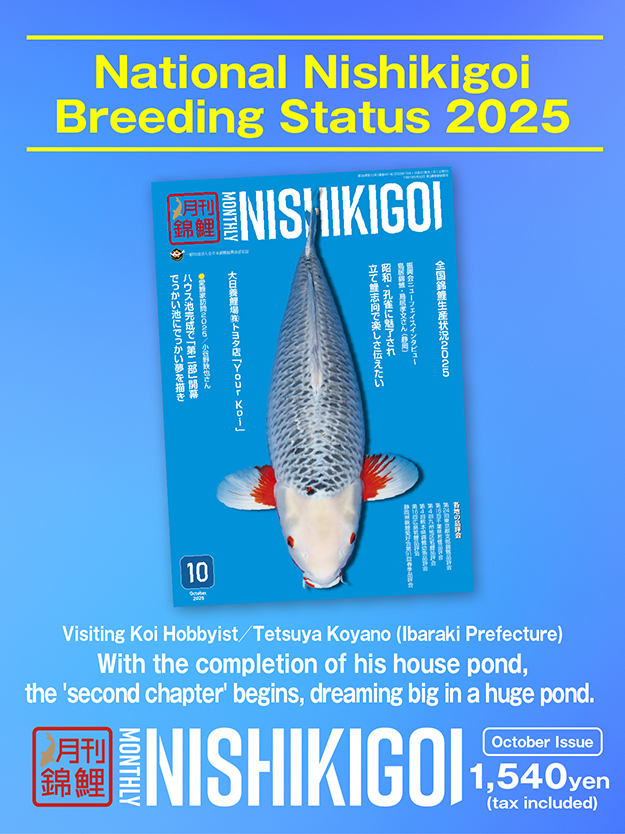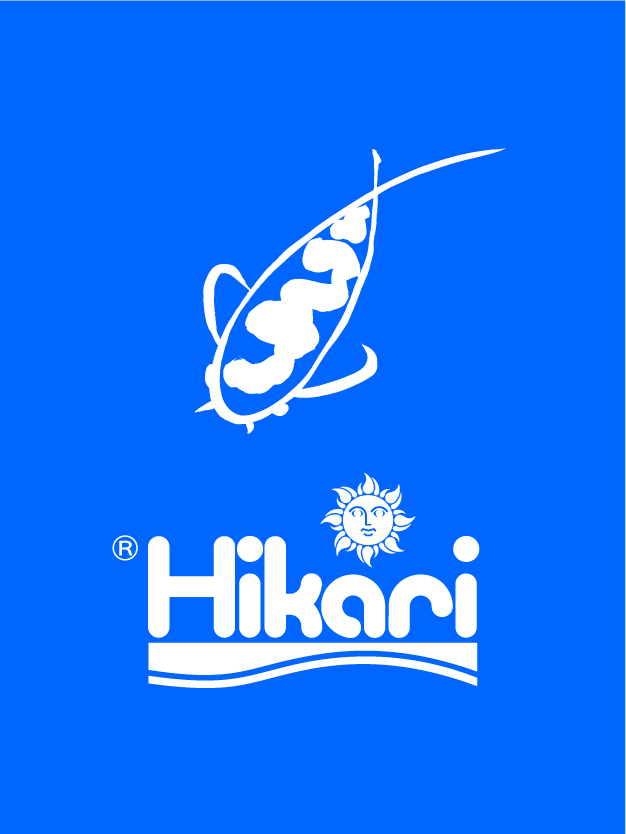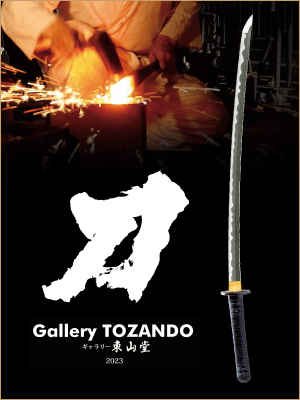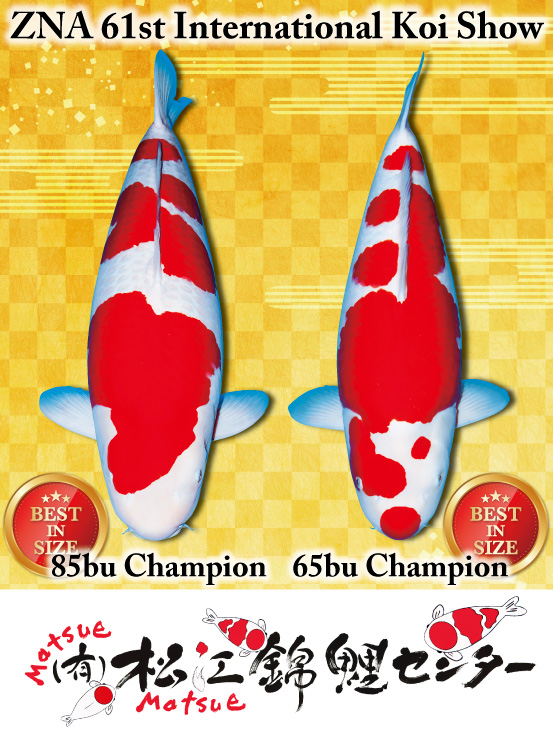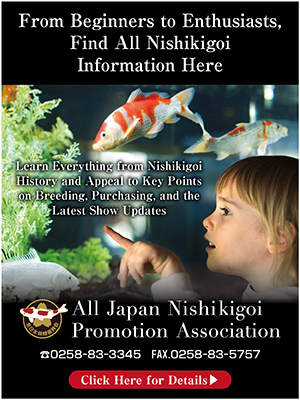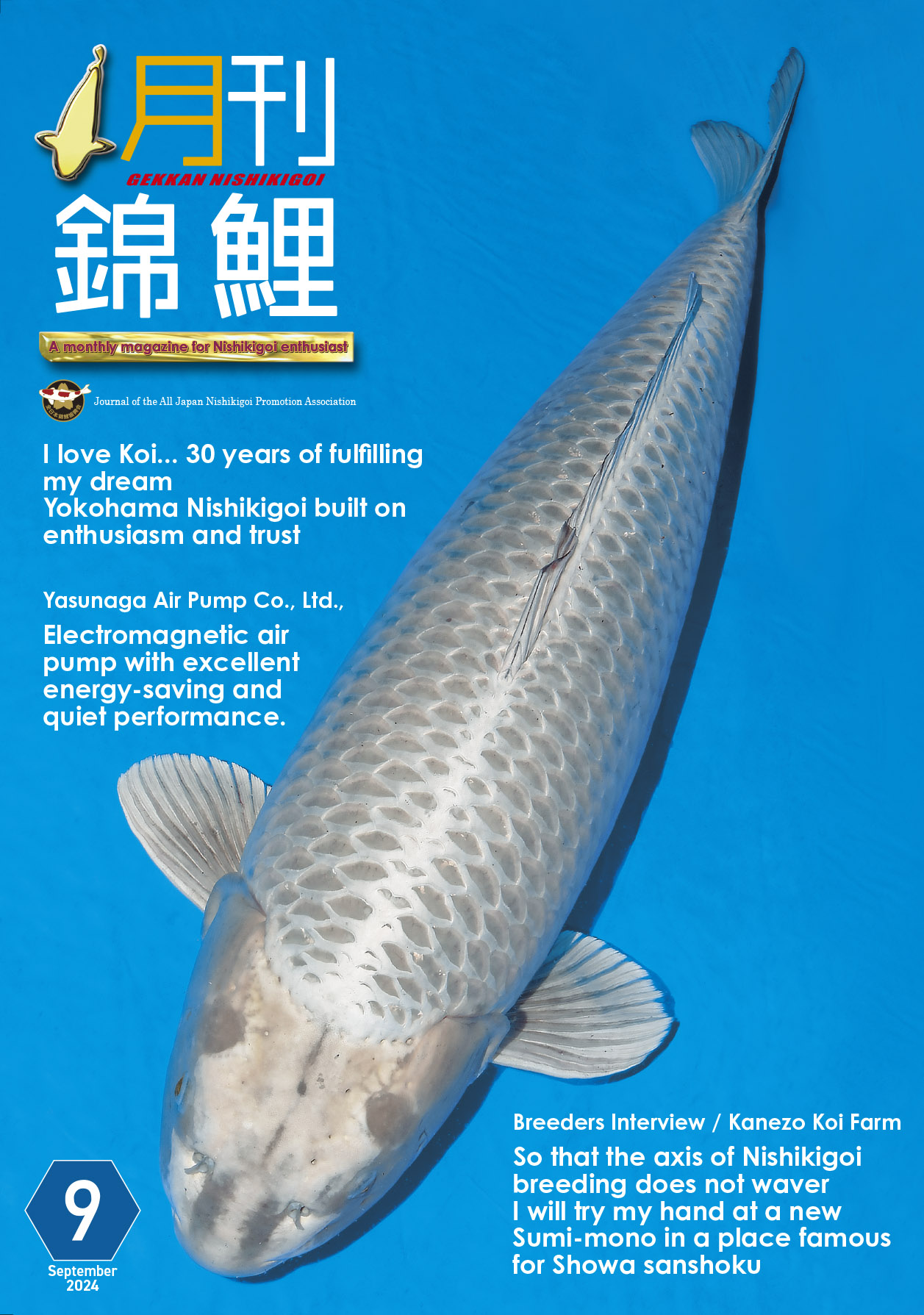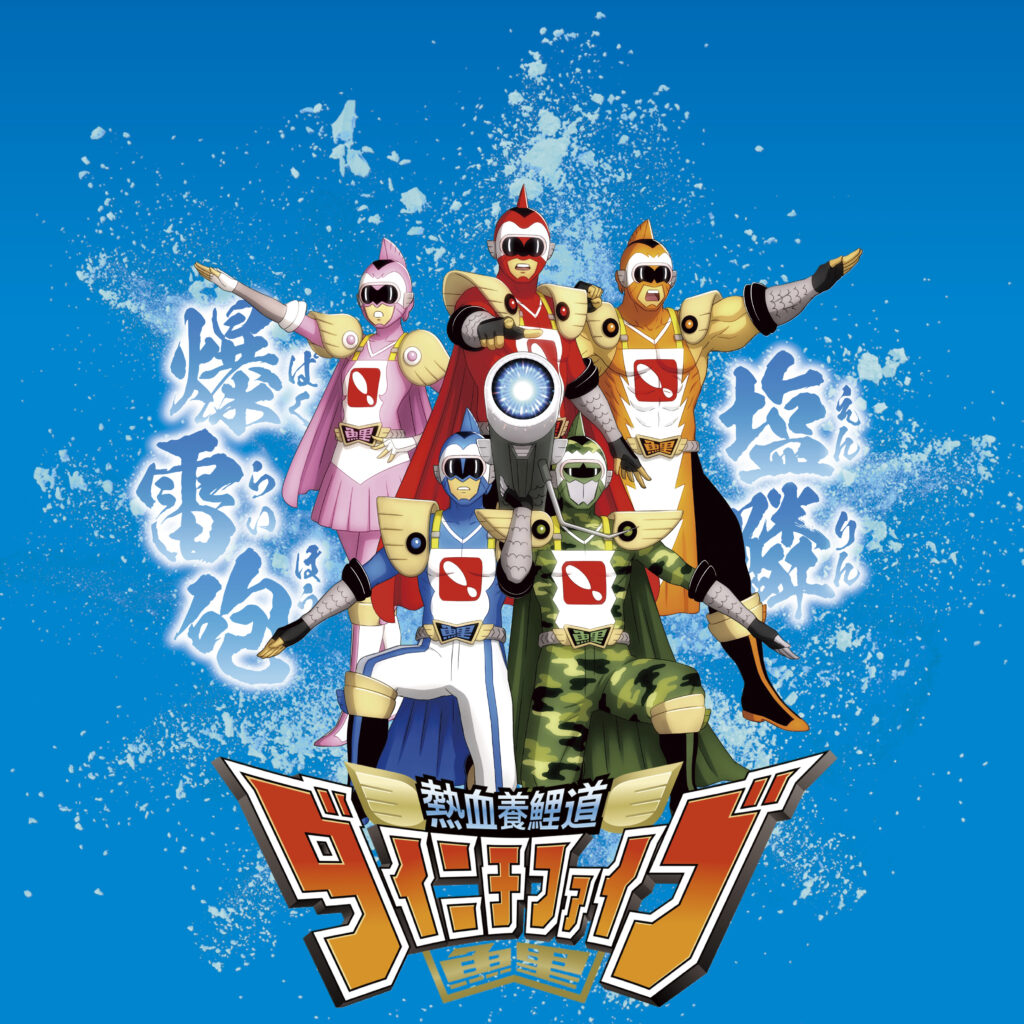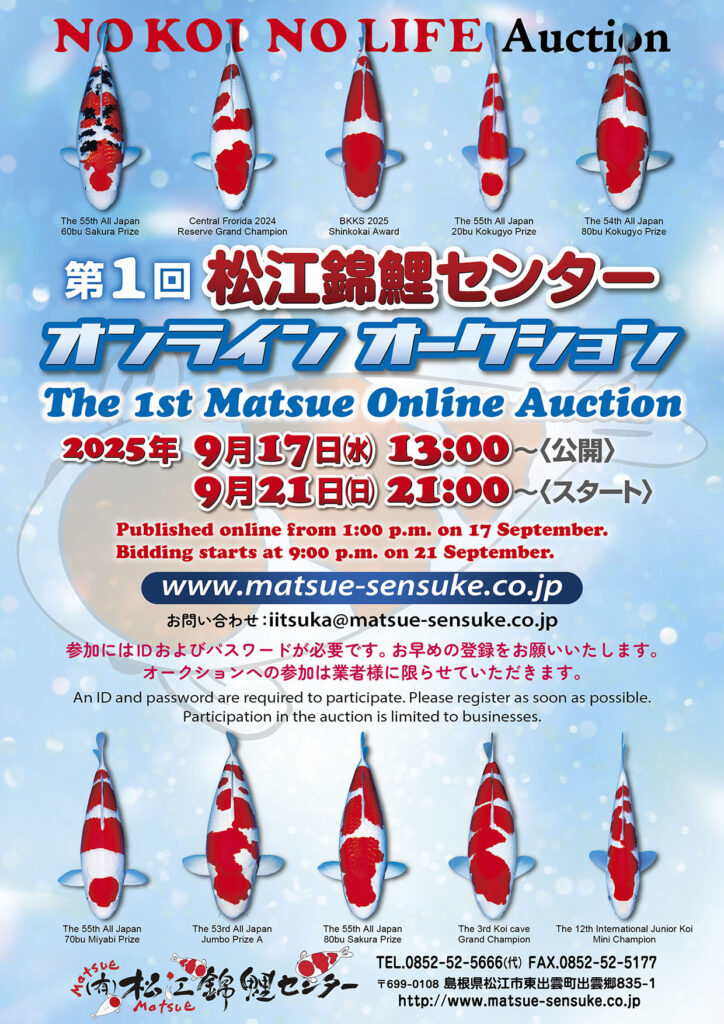Ginrin Sanshoku, a variety that stands out in koi show.
Traces its origins to a cross between a Ginrin Kohaku male and a Sanshoku.
― Until now, you’ve been discussing the main variety, the Kohaku. However, recently, Matsue’s Ginrin has been making a big splash at competitions.
Hiroaki: It’s the Ginrin Sanshoku. About 5-6 years ago, due to a rather embarrassing situation where our fry pond was empty, we decided to give it a try. The president bought a yearling male Ginrin Kohaku from Dainichi at an auction, and when it reached a usable size, we crossed it with our Sanshoku. Surprisingly, we ended up with some pretty good results that year, and we were able to sell them and even win prizes at koi show. Since then, it’s become a staple, and we’ve been producing it every year.
Takahiro: I purchased around 30 koi at an auction, mostly Kohaku, Showa, and Ginrin-Shiroutsuri, assuming they were all males. When I raised them, I was surprised to find that about 10 were females. I kept them for about three years.
One of those was a stunning male Ginrin Kohaku. I saw it as a potential parent koi because of its exceptional skin quality. Out of the hundred or so Ginrin Kohaku at the auction, this one had the most brilliant scales and the best overall appearance. Its silver scales were simply dazzling.
I decided to keep it, even though I wasn’t sure if I’d ever breed anything other than Kohaku. You never know what might happen in koi breeding, so I wanted to keep this exceptional koi.
ー How many brood pairs of Ginrin do you have?
Hiroaki: Two pairs.
ー Are you still using the original male Ginrin Kohaku?”
Hiroaki: Yes, we are still using him. And we’re also using their offspring as broodfish now. We just finished selecting them yesterday.
ー you’ve been crossing Ginrin Kohaku with Sanshoku?
Hiroaki: The ones we selected yesterday were from a cross of Ginrin-Sanshoku with Sanshoku. We don’t get a huge number of offspring, but both crosses produce a decent amount of Ginrin. We didn’t use the original Sanshoku parent koi this year. We’re planning to switch to new parent koi.
ー Both silver-scaled and regular Sanshoku appear. Which would you keep?
Hiroaki: We keep both. If the pattern is good, the Sanshoku can be sold. We have separate Sanshoku parents that are good for breeding, and we artificially separate their eggs. In total, we keep about 50 to 60 Sanshoku. We use the regular Sanshoku to breed Kohaku, and on the other hand, we use metallic-scaled males to breed metallic-scaled Sanshoku. The females are the same, we just separate the eggs. However, this year we only used one for metallic-scaled breeding. Even if we use a Sanshoku with an extraordinary body for metallic-scaled breeding, it probably won’t work. We look at the white ground and choose a Sanshoku that we think will work.
ー Have you decided to use a non-Ginrin Sanshoku as the female parent?”
Hiroaki: Yes, I’ve decided. We’ve tried crossing Ginrin with Ginrin several times, but the Ginrin pattern doesn’t always appear well in the offspring. It’s easier to get a good Ginrin pattern when we cross with a regular Sanshoku.
ー Your Ginrin Sanshoku koi often give the impression of having sumi that’s concentrated in spots.
Hiroaki: I guess it’s just a coincidence that the award-winning koi happen to have that characteristic. Fortunately, the sumi tends to develop well on them. Since we sell the Ginrin Sanshoku when they’re still small, sometimes people will say, “This one is Matse san’s, you know?” and I’ll be like, “Oh, really?”
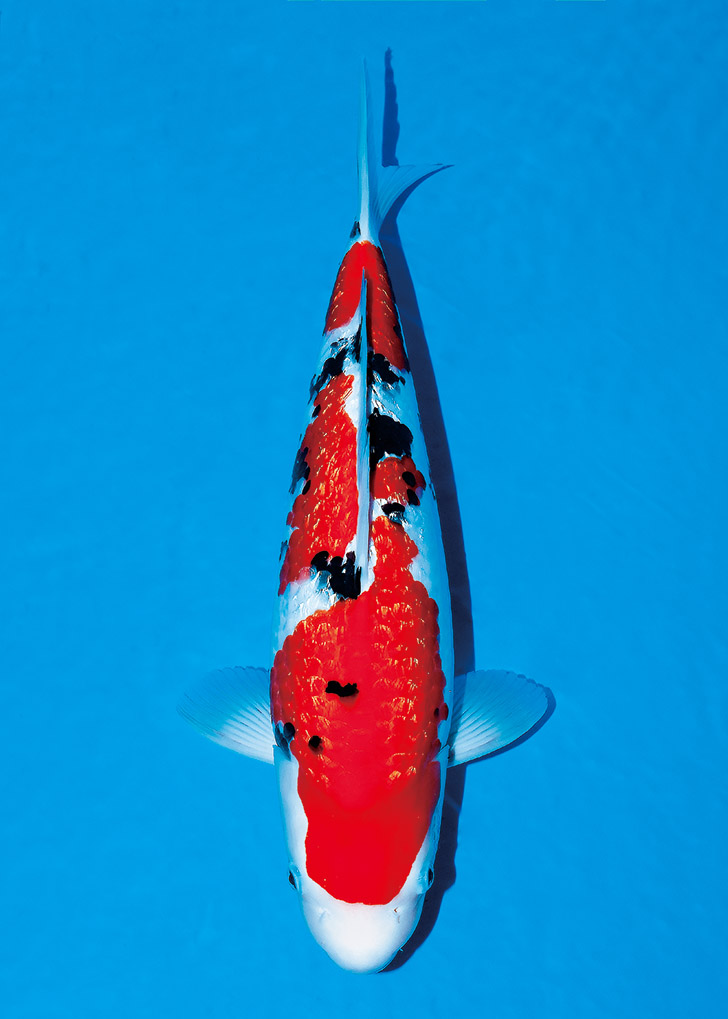
Grand Champion
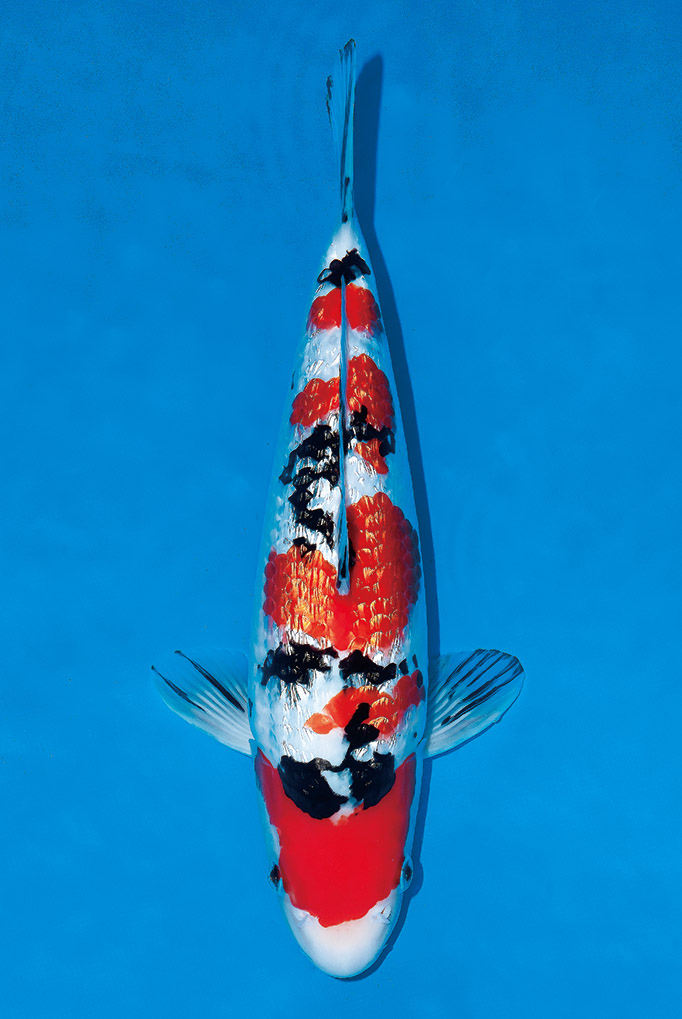
Young Champion
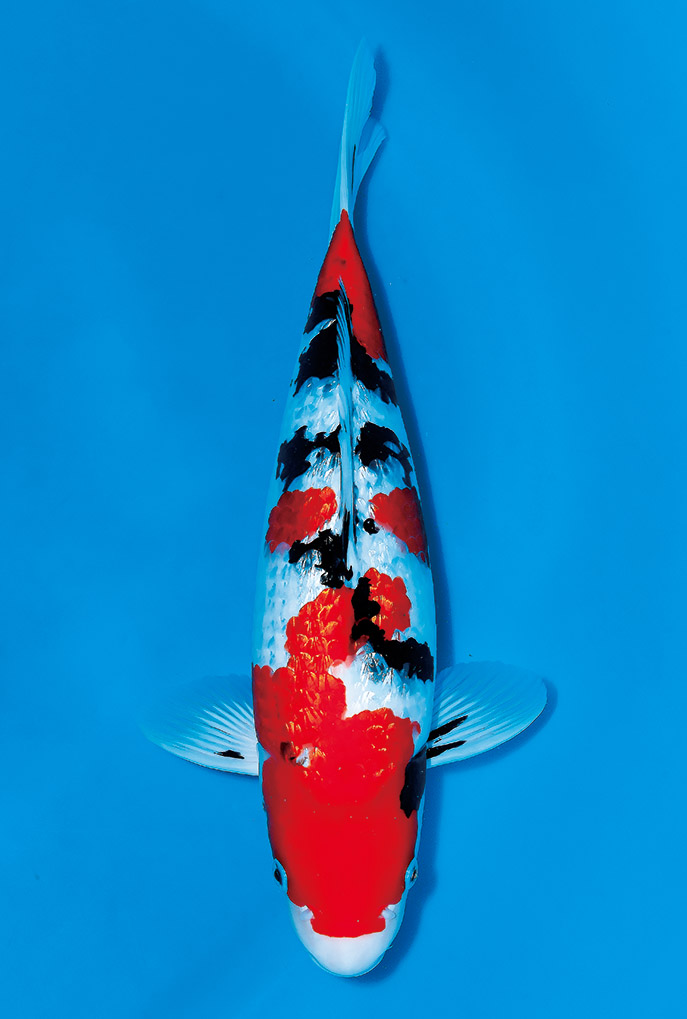
Young Champion
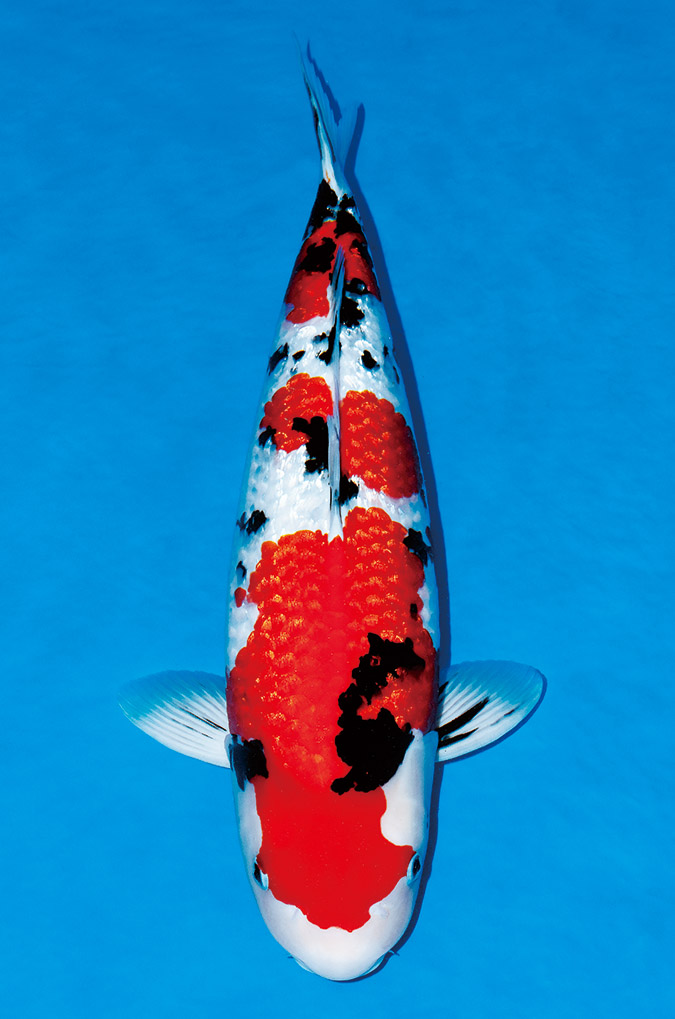
Grand Champion
ー Your progress in recent years has been truly remarkable.
Hiroaki: When we first started breeding Ginrin Sanshoku, many people around us also began to raise them (laughs). When our company president first brought them to the Narita, almost only our company was raising this kind of koi. At that time, everyone would ask, ‘Where did this koi come from?’
When I was young, I heard from people in Niigata that it was very difficult for Ginrin Sanshoku to develop black markings, and that the silver scales were also difficult to attach. At that time, I thought, ‘Ah, so that’s why people don’t raise Ginrin Sanshoku, and since there was still space in the pond, I decided to give it a try. As a result, I raised many Ginrin in the first year.”
ー I think the oldest ones are around 5 years old now.
Hiroaki: They’re about 5 or 6 years old. We’ve won quite a few awards at overseas young koi competitions, so they’re quite popular overseas. Of course, we also have orders for small-scale competitions domestically. While the top-class koi sell well, the intermediate ones are also pretty popular. Sometimes, koi that didn’t have any sumi (black markings) when sold develop them after about three years and are then entered into competitions. I think it’s through these repeated experiences that we’ve been able to win awards in recent years. However, compared to ordinary Sanshoku or Kohaku, Ginrin Sanshoku grow very slowly and are delicate fish, so if you feed them in the same way, they’ll quickly deteriorate. They’re difficult fish to handle, but we’re trying our best to raise them as big as possible.
ー Is it necessary to separate Ginrin from other varieties when keeping them in spring water?
Hiroaki: Yes, absolutely. If you treat them the same as the Kohaku, you’ll lose. Even when raised in the same pond, they’ll be smaller when you take them out. While Kohaku can grow to 63-64 cm by their second year, Ginrin Sanshoku can only reach a maximum of 55 cm. However, when raised in spring water after that, they grow slowly but steadily and can compete at 65 or 70 cm. Normally, rapid growth can deteriorate the quality of the Ginrin, but somehow, we’ve managed to maintain it.
ー Given your success in competitions, there must be a demand for more of these koi, right?
Hiroaki: To increase production, we would need to expand our facilities, but our main focus is Kohaku, and we’re already at our capacity. So, we’re not considering increasing the number of Ginrin. It’s quite difficult to produce high-quality Ginrin Sanshoku. Most of the offspring are red Sanshoku.Creating a Ginrin Sanshoku with a good pattern and black markings is truly challenging. People often mistakenly think that if you cross Ginrin, all the offspring will have Ginrin, but that’s not the case. The ratio of Ginrin is quite low, and most of them are regular Sanshoku.
ー Have you always wanted to breed Ginrin?
Hiroaki: I’ve always had the idea of breeding Ginrin Kohaku. If I have the opportunity, I’d still like to try. However, when I first bred with a Ginrin Kohaku male, I ended up breeding Ginrin Sanshoku. At first, no one expected Ginrin Sanshoku to be bred so beautifully.
ー In other words, it was an unexpected success from the beginning?
Hiroaki: That’s true. I didn’t expect it to go so smoothly (laughs). And then it won an award, and many people asked about it, so I thought I should continue breeding Ginrin Sanshoku. Although I also tried to breed Kohaku using Ginrin Kohaku, I only succeeded in breeding a few. Ginrin Kohaku is indeed difficult.
